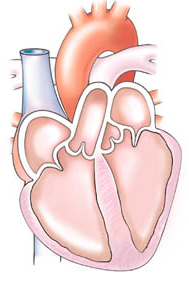
The study said that changes in the DNA on the chromosomes were associated with increased risk of developing coronary artery disease and heart attacks.
The study confirmed the discovery of researchers who reported earlier this year that mutations on other chromosomes raised the risk of heart disease.
Carrying one copy of the genetic change increased the chance of developing heart disease by at least 20%, while two copies increased the risk by more than 40%, said Dr.Nilesh Samani, a researcher at Britain’s University of Leicester, who led the study.
“Understanding the genetics that lead to heart disease is a powerful tool to tell us how much risk a person faces. We are not talking about rare genetic variants here, but rather variants that are very common in our population,†Samani said.
The findings added to research that might help explain why so many people suffered heart disease even if they had no clear risk factors such as smoking, high cholesterol or high blood pressure.
The research could also pave the way for more effective drugs and better treatment and screening.
Scientists have known for years that genes, with environmental factors, play a role in increasing the risk that people will develop problems such as heart disease.
They are still trying to work out which parts of the genome — the total collection of DNA, including the genes and other genetic material — are actually responsible.
The researchers looked at 500,000 genetic changes in nearly 2,000 white Europeans with coronary artery disease and 3,000 healthy people.
They then compared the results with a similar German study to pick out the common genetic mutations that indicated a higher risk of heart disease.
“People have identified genetic variants which change risk but this is the best evidence of specific markers,” Samani said in a telephone interview.
The next step, he added, was to study larger groups to see how genetic mutations fitted in with other risk factors such as high cholesterol.
